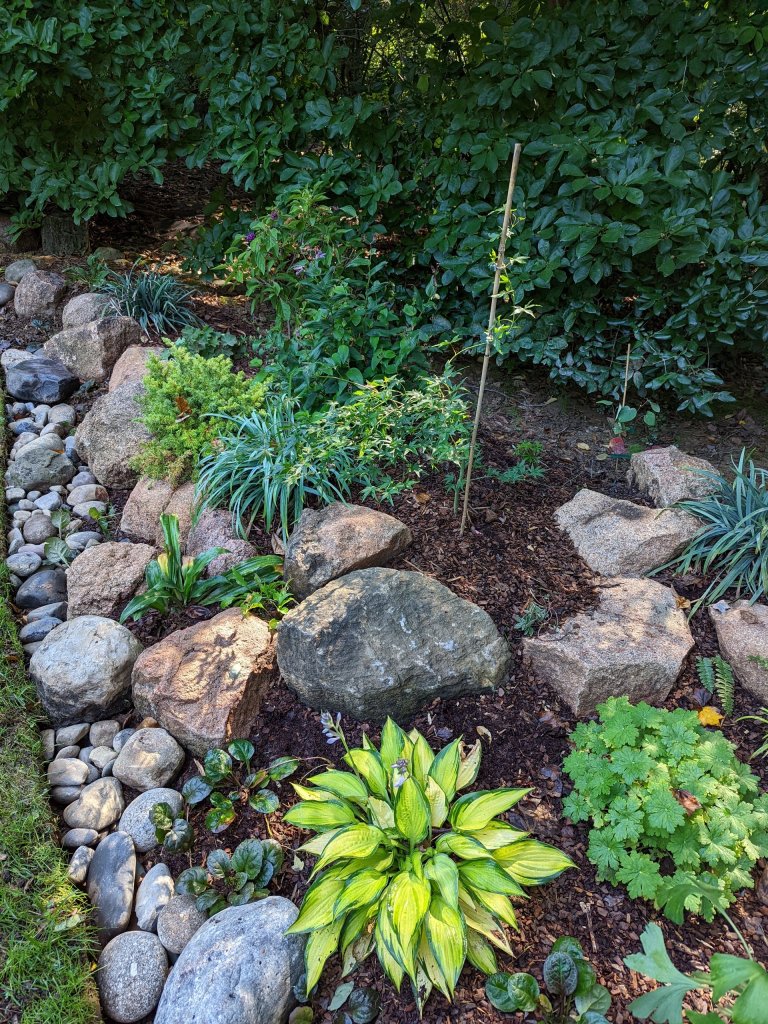Despite a brief period of abundant rainfall, the garden’s dryness combines with shortened daylight hours to accelerate its seasonal fade. There will be scattered flowers everyday through late autumn and winter, but the current abundance in the weeks before the first frosts must be fully enjoyed.

As I continue to fiddle, adding transplants and rooted cuttings to fill the newly planted area that borders the forest on the garden’s southern border (above), I find moist soil beneath the layer of composted pine bark. Prior to the addition of soil excavated from a seasonal pond at the rear of the garden, the narrow section of lawn struggled with dry, shallow soil and shade from overhanging trees. Several lower branches of the ‘Merrill’ magnolia have been removed, and yearly pruning will be required to maintain the balance of sun and shade. I’m pleased that in several weeks since the planting, no additional watering has been required.

The last of the toad lilies (Tricyrtis hirta ‘Miyazaki’, above) has come into bloom, and all are expected to remain in flower until the first frost. Even with the slightest frost the flowers fade, but in the few, or even six weeks until our first frost I will enjoy the show. Large carpenter bees ignore flowers of Verbena bonariensis that were a favorite several weeks ago, harvesting nectar of toad lilies by biting through the outside of petals, bypassing the mechanism for spreading pollen.

Several toad lily clumps have grown to shrub-like proportions in part sun, while the few with a bit too much sunlight flower prolifically but brown along the edges of leaves. In more shade, flowering diminishes, and often I’ve moved under performing clumps to sunnier spots.

In every case, toad lilies must be located where they can be readily seen. The flowers are not large, so they must be appreciated beside a path or close to a planting beds’ edge. In the third week of September the peak flowering season is short, so every bloom must be enjoyed.
Hey Dave..
Cuttings! Do you have a trick for trying to propagate Crape Myrtle? I have a volunteer in my yard and I have tried cuttings and seeds In different potting mediums (soil, sand, combinations of both, etc) and am getting zero results.
Help! I really love this tree and would love another.
I rarely try to root cuttings since I am too often negligent in monitoring their moisture. Cuttings of new growth tips taken in summer are said to root easily if regularly misted or when the container is placed in a plastic bag to retain moisture.